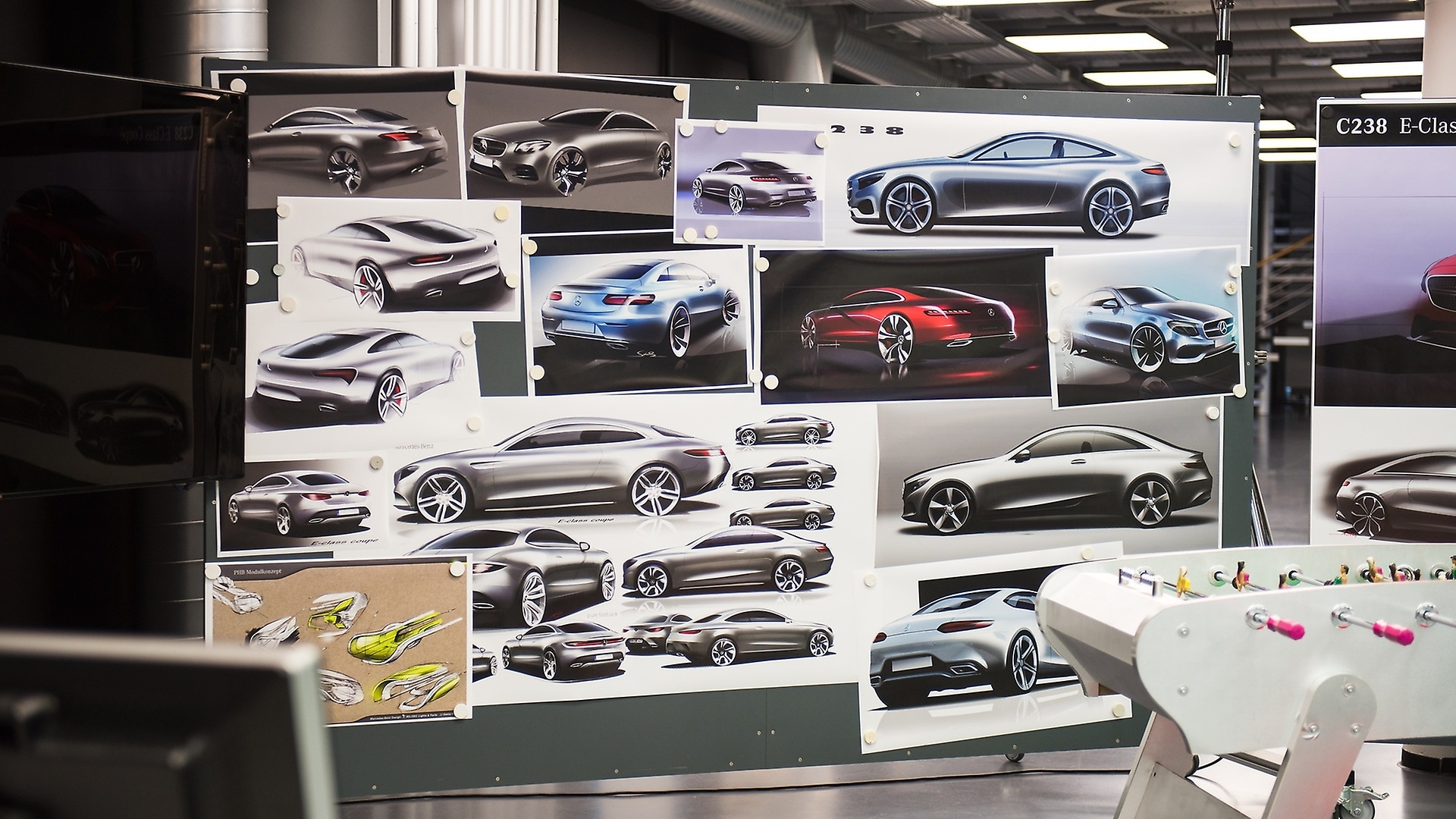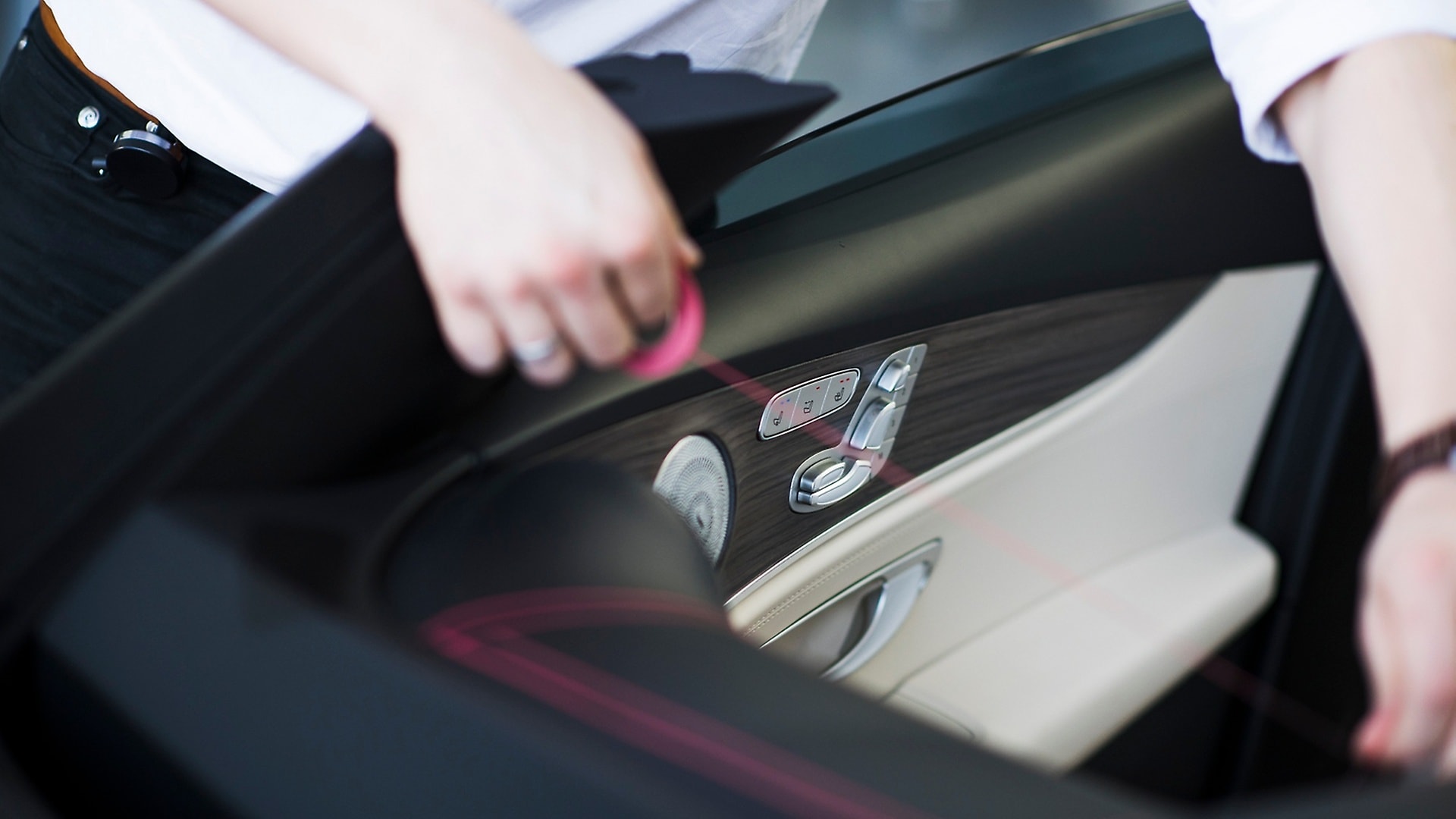The interior is initially also designed as a drawing or rendering. A full-scale clay model allows designers to experience the development of the design in three dimensions and to develop the vehicle from the inside out, as it were, until they have created an aesthetically sophisticated sense of space. Several interior variants are produced to decide which concept to pursue further.
Colour and trim designers select materials and colours for surfaces from hundreds of fabric, leather, wood and metal samples. The effects of the touch and feel and the colours are compiled and defined under "real-life conditions" in full scale seat boxes.
All control and display elements are usually designed especially for the vehicle and subsequently optimised.
,xPosition=0,yPosition=0.5)



,xPosition=0.5,yPosition=0)